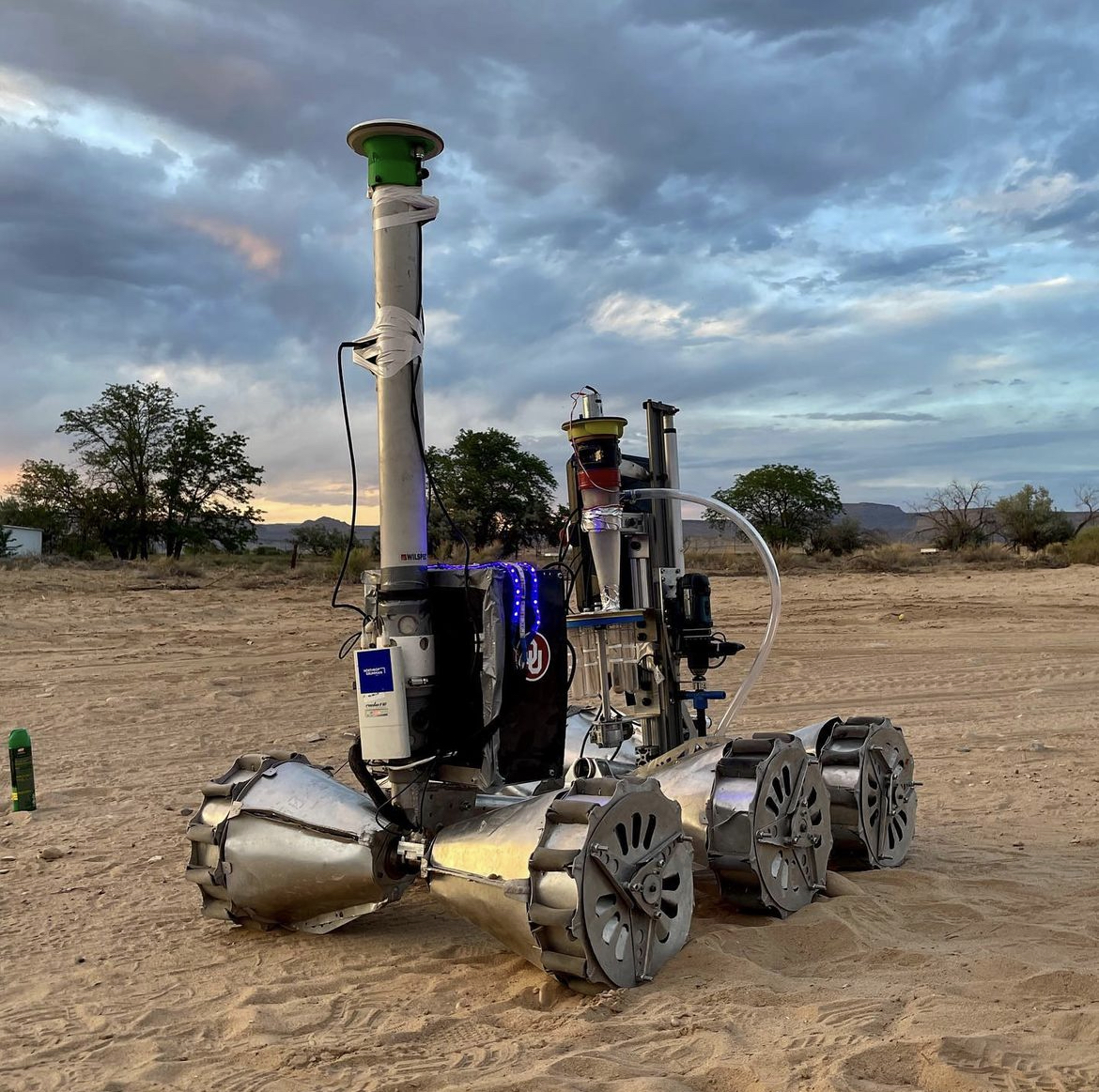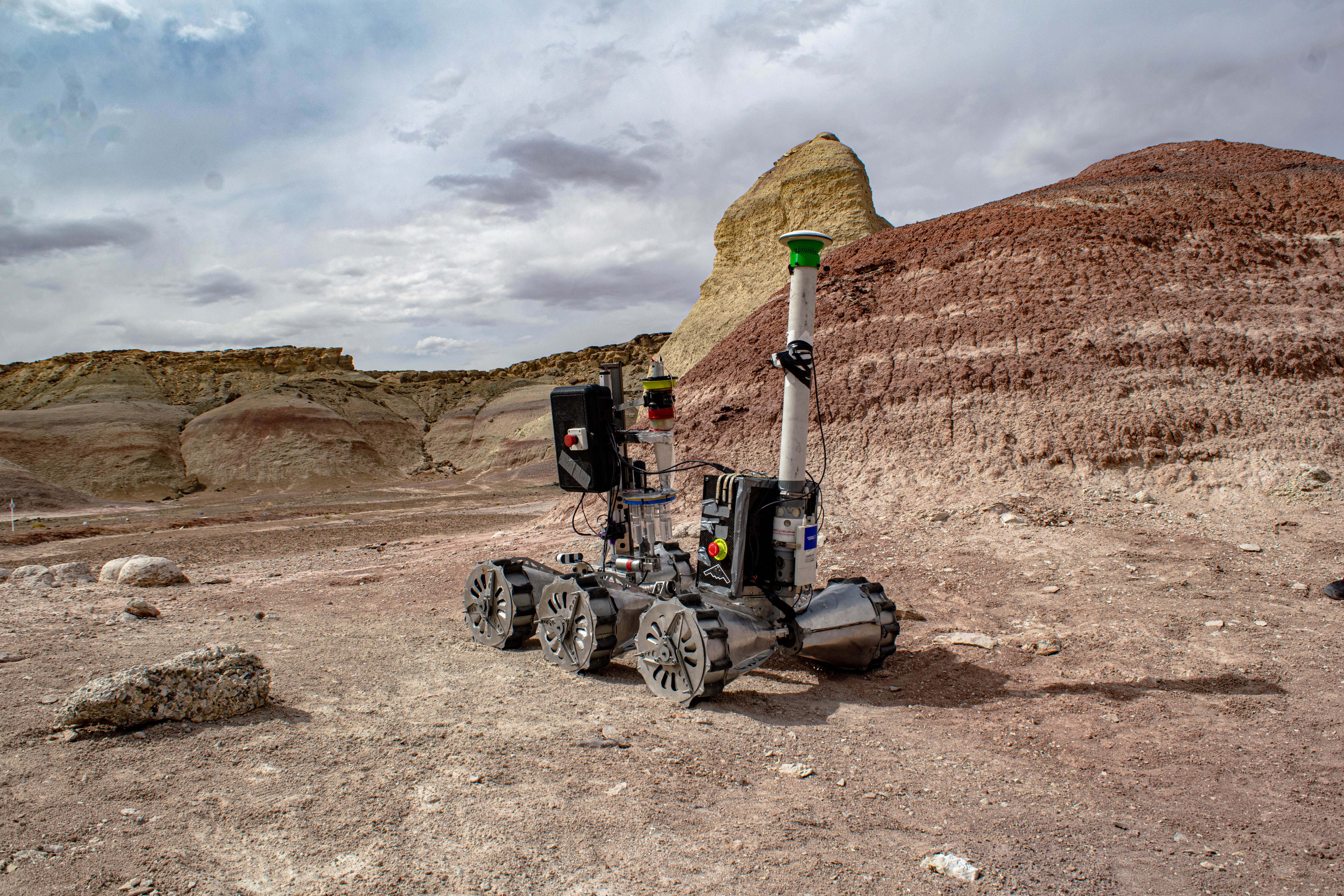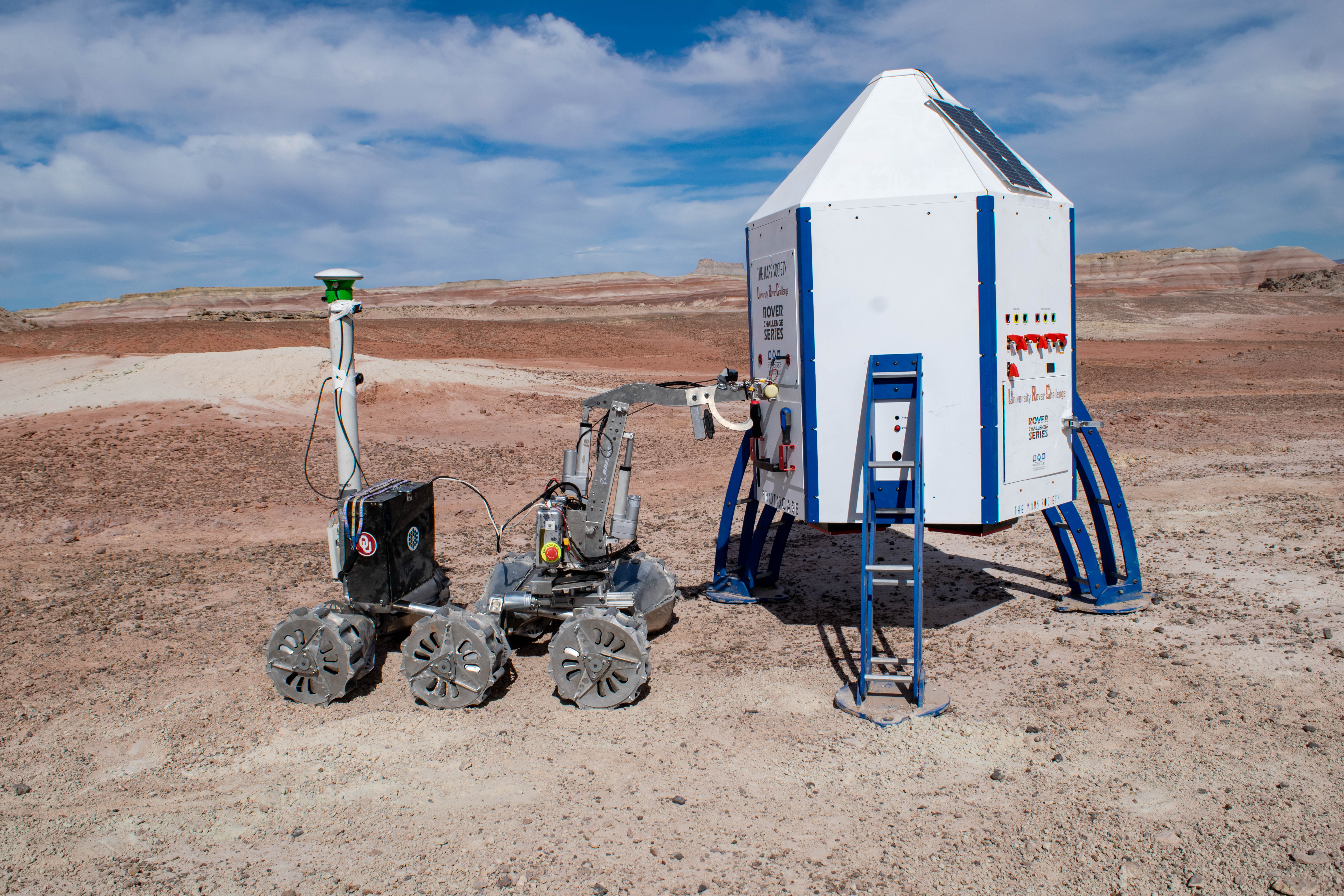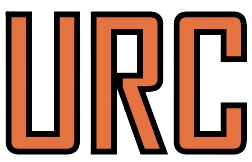University Rover Challenge
The Mars Society
Meet REMI

The Sooner Rover Team is proud of placing 7th worldwide at the University Rover Challenge 2022 season with our rover, Remi!
As one of OU's engineering competition teams in the Gallogly College of Engineering,
we are focused on the success of our students and the team's ability to compete competitively.
As showcased through Remi's performance, the team has worked super hard throughout the year
to design, build, and code the rover to life! We strive for improvement every year by
working to optimize our system's performance and learn how to be better engineers and scientists along the way!
Are you up for the Challenge?!
" The University Rover Challenge (URC) is the world's premier robotics competition for college students. Held annually in the desert of southern Utah in the United States, URC challenges student teams to design and build the next generation of Mars rovers that will one day work alongside astronauts exploring the Red Planet. URC consistently draws an international field of the most talented and promising students around. "
- The University Rover Challenge (URC) is a project of The Mars Society, an international non-profit humans to Mars organization.
Competition Missions
Remi is judged on the System Acceptance
Review
and four missions during competition:
• Science
• Extreme Delivery
• Equipment Servicing
• Autonomous Navigation

Science Mission
During the science mission, Remi is tasked with investigating multiple sites of minerological
and biological interest and given 20-35 minutes to conduct in-situ analysis of collected regolith or
soil samples. This analysis is conducted using on-board instrumentation and must perform life detection
testing at each sample location to determine an absense or presence of life!
Remi's science package utilizes an actuated claw that collects and deposits samples into test tubes
fastened in a rotating carousel mechanism that allows for multiple analyses to be performed. This contraption
is designed in a way that prevents sample contamination.
Our strategy for analysis is using an installed USB microscope equipped with a 480-575 nm light source
to identify bioluminescence. This analysis is performed in mission control with the assistance of mounted cameras
on Remi. In a later portion of the science mission, the science team will report these findings in a 15 minute presentation
to judges.
Extreme Delivery Mission
The extreme delivery mission requires Remi to retrieve and deliver objects to specific
Global Navigation Satellite System (GNSS) coordinates, providing assistance to astronauts, and traversing
a variety of terrain. The Mars Desert Research Station environment ranges from soft sandy areas to rough stony areas,
rock and boulder fields, vertical drops, and steep slopes.
Objects to be retrieved on the field include small handtools and instruments, supply containers, and rocks up to
5 kg in mass.


Equipment Servicing Mission
The equipment servicing mission involves Remi traveling flat terrain to reach a mock-up equipment system
and performing various dexterous tasks with its robotic arm. Remi is also given the task of delivering a cached
science sample to a lander and performing maintenance on that lander.
Maintenance involves manipulating the arm to perform a number of subtasks, such as:
picking up and transporting a container to the lander,
manipulating a drawer,
tightening screws to secure a drawer,
typing commands on a keyboard,
operating a joystick,
picking up and inserting a USB memory stick into a slot on the lander,
pushing buttons, flipping switches, and turning knobs.
Autonomous Navigation Mission
For the autonomous navigation mission, Remi must autonomously traverse easy to moderate terrain
to reach given GPS locations, single posts, or between gates consisting of two posts. All single posts
and gate posts exhibit 3-sided visual markers that display black and white ARUCO tags that are
identified and classified using Remi's mounted cameras.
To be considered successful, Remi must stop within 3m of a given GPS position,
2m of a post,
and must fully pass between both gate posts.

Contact
Our Address
- Benton Smith
Rawl Engineering Practice Facility (REPF)
850 S Jenkins Ave
Norman, OK 73019 - soonerrover@ou.edu
